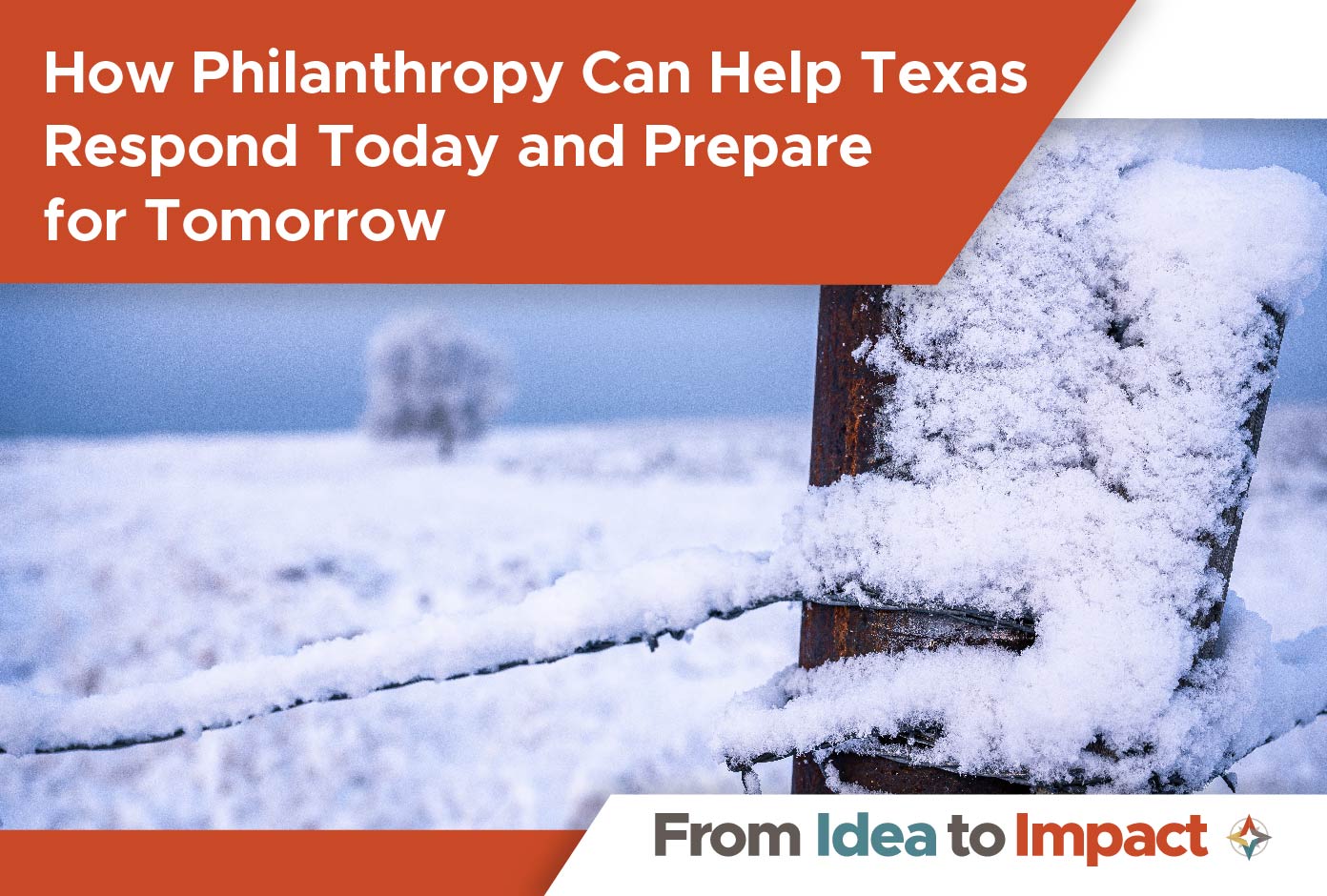How Philanthropy Can Help Texas Respond Today and Prepare for Tomorrow

This post was originally published on LinkedIn, by Arabella Adviors’ Managing Director in Texas, Jeremy Gregg.
~
“You know the weather is bad when even virtual events are being canceled!”
I halfheartedly laughed when a friend said this, but I was aware I was doing so from the comfort of a home that still had power, water, and the Wi-Fi necessary for me to work. Millions of my fellow Texans were not so fortunate, as the Texas Tribune has reported.
Much of the once-bright Lone Star State is now mired in blackouts, resulting in calls from the governor’s office to investigate the Electric Reliability Council of Texas. As Texans justifiably demand accountability for this inexplicable failing on the part of our state’s infrastructure, philanthropists across the country have asked many of us at Arabella Advisors for advice on how to assist in the effort. Building on resources my colleagues have previously shared, including a guide for helping after a disaster and a resource for donors seeking to donate directly to individuals, I am pleased to offer some advice to donors interested in helping my fellow Texans weather this storm.
First, as always, I steer donors to our partners at the Center for Disaster Philanthropy (CDP), which Arabella Advisors was proud to support as a co-founder. As CDP writes, “Every funder is a disaster funder.” Some useful resources that it has pulled together include its Winter Storms profile; Extreme Cold Issue Insight; Electricity and Power Infrastructure and Systems Issue Insight; and Basic Tips for Disaster Giving, which highlights ways to keep disaster-focused grant making both simple and highly effective. These resources can help philanthropists at all levels respond to the pressing challenges that arise in times like these.
A simple way that anyone can make a long-term impact is by donating to CDP’s own Disaster Recovery Fund. The CDP’s fund will tactically allocate funds across the entire disaster life cycle, from disaster preparedness to long-term recovery.
Second, for donors who prefer to make immediate gifts to NGOs that are actively working on issues related to the storm right now, I suggest the Texas Tribune’s list here, a South Texas-specific list from Houstonia here, and a North Texas-specific list from the Communities Foundation of Texas here. (If you would like specific recommendations for charities to support, please email me and I can point you to trustworthy, impactful organizations.)
Third, such a devastating event can provide thoughtful philanthropists with an opportunity to ask themselves the hard questions.
- What role can my donations play in shifting the public policies that could better prepare us for future disasters? For every dollar that US foundations spend per year, the U.S. government spends almost $59. By investing in appropriate policy reforms and sensible advocacy initiatives, philanthropy can positively impact large-scale change. For more, check out my colleague Loren McArthur’s article in the Chronicle of Philanthropy, “Philanthropy Can’t Replace Our Broken Government — but It Can Help Rebuild It.”
- Whose voices are we not hearing in the midst of this crisis? Like all climate disasters, this winter storm has disproportionately impacted Black, Indigenous, People of Color, and low-income communities across Texas. And yet, as Dr. Michel Gelobter shared recently in Inside Philanthropy, “less than 1.4% of all climate philanthropy has been directed to climate policy work for and by communities of color.” It is vital that philanthropists acknowledge the necessarily privileged position from which they view the world and work to intentionally engage the communities they seek to serve. From evaluating the equity impact of their grants, to assessing the inclusivity of their grant–making practices, to confronting the diversity of their decision-making teams, funders can significantly improve their impact by simply integrating DEI principles into their grant making.
- Who else shares my concern, and can we work together to better prepare for the next weather crisis—be it a freeze, a hurricane, a drought, etc.? One of the major trends we are seeing in the wake of COVID-19 is an awareness that no single funder can fully address an issue, particularly one as vast as a statewide disaster. Whether by simply building a learning community, or actively working to align funding, or even pooling resources into a formal donor collaborative, funders can maximize their impact through collaboration.
- How can I integrate my donations, investments, and influence to address these challenges? Donors are increasingly looking to do more than simply “write nice checks to nice organizations,” as one of my peers described the traditional approach to philanthropy. Developing an integrated platform can provide philanthropists with highly effective ways to harness the strengths of 501(c)(3) and 501(c)(4) giving alongside investing using LLCs to harness the full power of their portfolio to drive impact.
Clearly, no funder or single effort could have prevented this disaster. But, working together with philanthropists on questions like these, the team at Arabella is optimistic that we can better prepare Texas—and our country—for the years ahead.
